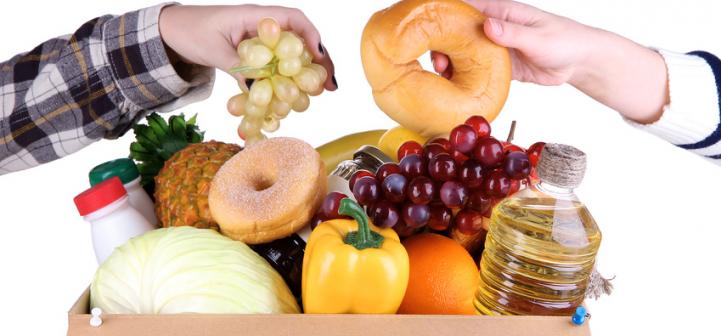
Did you know that over 30% of food in the US is wasted? In 2013, the USDA and EPA took action by launching the US Food Waste Challenge to encourage everyone, including K-12 schools, to reduce, recover, and recycle food waste. Are you a food service professional or school administrator that needs resources about how to reduce food waste or a parent or volunteer that has noticed this problem and wants to help? One of the goals of the Food Waste Challenge is to disseminate the best practices!
Guidance exists for reducing [link to forthcoming article], recovering, and recycling food waste, though the focus of this article is food recovery. Many schools have begun recovering uneaten food from the cafeteria and donating it to feed those in need. Three common questions when thinking about food recovery programs are: Who can approve a program? What can be donated? Where can the food go?
Who can approve food recovery efforts?
Decisions about food recovery are made at the local level. First steps include talking with your school leadership. Usually principals can decide if the school can have a food recovery program. The school district is often involved, and the local health department should be contacted to determine what rules and regulations exist for start-up and continuation of the program.
Don’t assume food cannot be donated! According to the USDA, food donation has been a longstanding policy in all Child Nutrition Programs, and program regulations do not prohibit operations from donating leftovers. In fact, food donations are offered liability protection from the 1996 Bill Emerson Good Samaritan Act. Many states have Good Samaritan laws too.
What food can be donated?
Check with your local health department for specifics and how foods should be gathered. Typically wholesome, unopened or uneaten foods can be recovered. For example, most schools can donate shelf stable items like granola bars as well as perishable goods like milk, yogurt, and fresh produce.
Determining what food can be recovered can help you plan for resources needed to collect and distribute food. Food usually cannot re-enter the kitchen area, so having tables, boxes, carts, or refrigerators in cafeteria seating areas can be helpful for collecting food that will be donated.
Where can food go?
Where food goes and how it gets there depends on the type of recovery program. It is very common for schools to initiate direct relationships with local emergency food providers like food banks, who may be able to pick up donations from the school. If not, think about partnering with other schools to coordinate transportation of your aggregate donations!
Other creative strategies include funnelling food into weekend backpack programs, inviting families to confidentially pick up perishables, and using food in classroom cooking projects. Schools can also work with food recovery groups like Food Bus or Food Rescue to set up a program.
The benefits of food recovery programs expand beyond conserving our natural resources and reducing hunger in our communities. Starting a food recovery program in your school can save money by providing an idea about what is most wasted and what you may be able to address with back of the house changes. Additionally, these programs often involve partnerships among education departments, food service departments, parents, students, and community organizations that strengthen school and local communities.
Lastly, these programs can spur conversations with students and change how children think about their food, where it comes from, and what happens if it’s not eaten. Building awareness, learning how they can make a difference, and allowing them to exercise choice in what happens to their food are benefits that will continue to impact generations to come!
References and Resources
Facilitating Food Recovery and Donation through Liability-Limiting Legislation
Food Bus, Inc. (Facebook)
Guidance on the Food Donation Program in Child Nutrition Programs
USDA webinar for Recovering and Donating Uneaten, Wholesome Food in Schools
USDA Webinars for K-12 Schools Reducing, Recovering, and Recycling Food Waste
Related Articles
Feeding Hungry Tummies: Lunch Hour Strategies to Curb Food Waste
Making Healthy School Food Choices – A Parent’s Influence
Contributor
Alisha Gaines, PhD, Cornell University, Division of Nutritional Sciences
